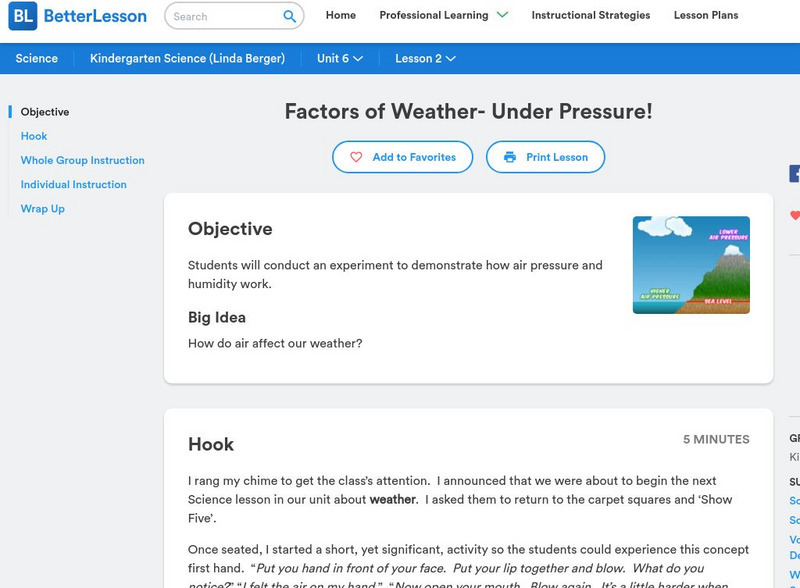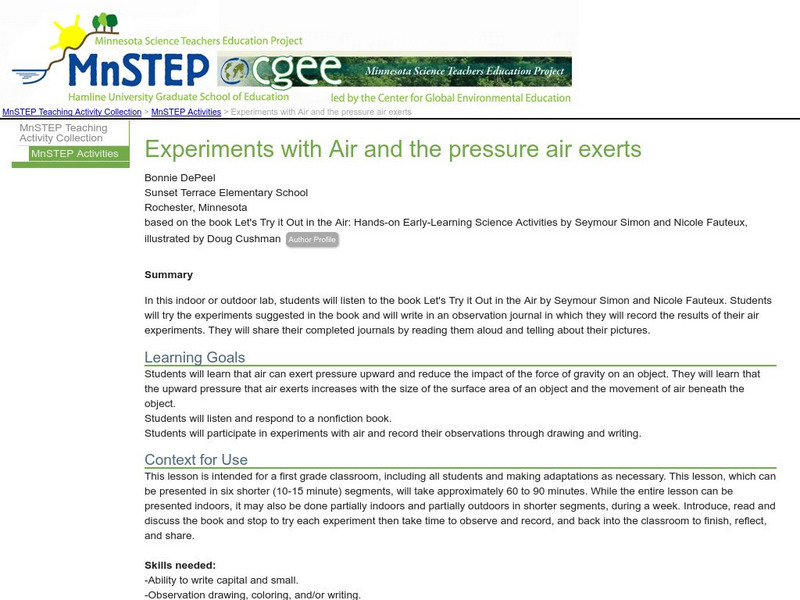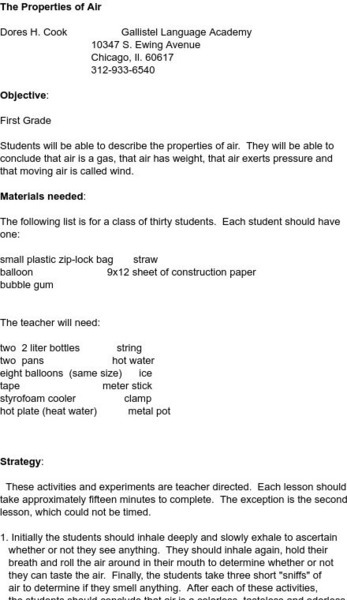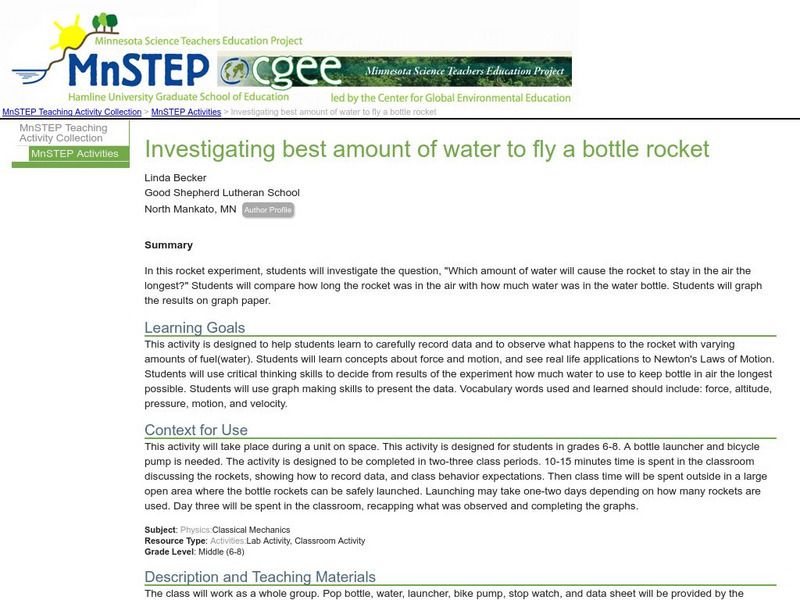Curated OER
Is It There?
Students participate in a lesson designed to illustrate these concepts using simple materials. They use Science process skills to observe, measure, predict, make inferences, and communicate while completing the activity. Proper safety...
Curated OER
Robert Boyle and Experimental Methods
Young scholars discuss the difference between the Baconian inductive method and the Aristotelian deductive approaches. They complete a given set of questions then discuss them with the class.
Curated OER
Pop Rockets
Pupils work together to design and build a paper rocket. They place a propellant in the contraption to make it fly. They discover Newton's third law of motion.
Curated OER
Aerodynamic drag
Learners construct a device that can launch spinning balls. One example would be a mailing tube with one side partially cut away, lined with sandpaper. Styrofoam balls should be used for the greatest effet. They are explained how a...
Better Lesson
Better Lesson: Factors of Weather Under Pressure
How does air affect our weather? Students will conduct an experiment to demonstrate how air pressure and humidity work. Included are pictures and videos of the lesson in action, whole group and individualized instruction plans, and a...
University Corporation for Atmospheric Research
Ucar: Clouds in the Air: Why Are They There?
An experiment that demonstrates why there are clouds in the sky. Start with air, invisible water vapor, particles we call condensation nuclei, and air pressure...the cloud comes later!
Science Education Resource Center at Carleton College
Serc: Experiments With Air and the Pressure Air Exerts
In this indoor or outdoor lab, students listen to the book Let's Try it Out in the Air. Then they have an opportunity to try the air experiments suggested in the book and write in an observation journal.
Science Education Resource Center at Carleton College
Serc: High and Low Pressure
Students will experience a hands on reference for high and low pressure as it relates to air movement. This activity will help with understanding high and low pressure behavior.
Alabama Learning Exchange
Alex: Air Is All Around You
In this science lesson students will be asked the question, "Does air take up space?" and "Does air have weight?" Students will conduct experiments that prove that air has mass, takes up space, and exerts pressure.
TeachEngineering
Teach Engineering: What's Air Got to Do With It?
Students are introduced to the concepts of air pollution and air quality. The three lesson parts focus on the prerequisites for understanding air pollution. First, students use M&Ms to create a pie graph that expresses their...
Science and Mathematics Initiative for Learning Enhancement (SMILE)
Smile: The Properties of Air
Lesson plan to teach properties of air. Pupils use balloons, plastic bottles, plastic bags and a meter stick to conclude that air is a gas that has weight, exerts pressure, and moves.
Other
60 Second Science: Air Putting It to Work
Investigate the properties of air. Observe the water vapor present in our exhaled breath.
Science Education Resource Center at Carleton College
Serc: Investigating Best Amount of Water to Fly a Bottle Rocket
In this rocket experiment, students will investigate the question, "Which amount of water will cause the rocket to stay in the air the longest?" Students will compare how long the rocket was in the air with how much water was in the...












